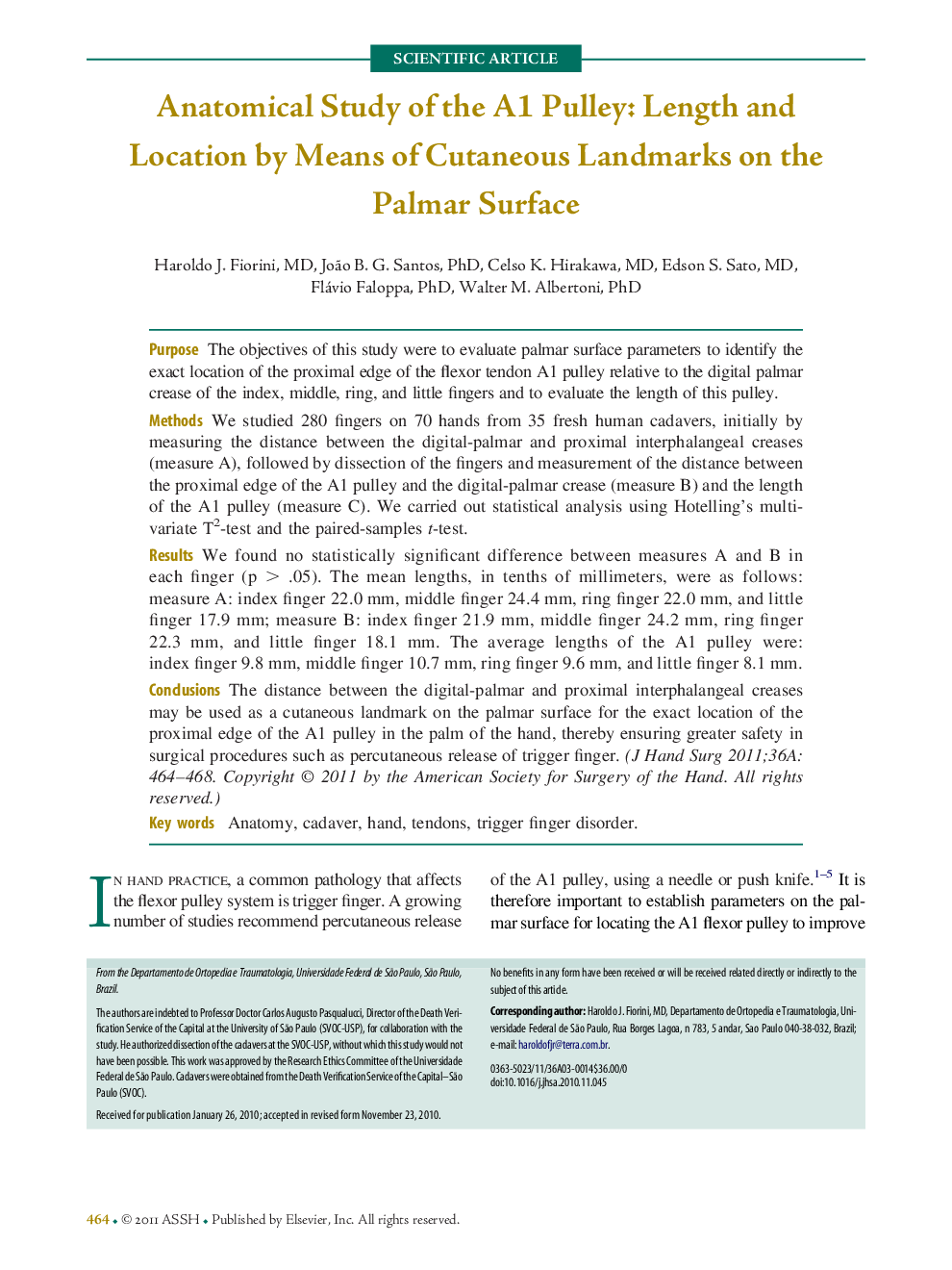| Article ID | Journal | Published Year | Pages | File Type |
|---|---|---|---|---|
| 4069730 | The Journal of Hand Surgery | 2011 | 5 Pages |
PurposeThe objectives of this study were to evaluate palmar surface parameters to identify the exact location of the proximal edge of the flexor tendon A1 pulley relative to the digital palmar crease of the index, middle, ring, and little fingers and to evaluate the length of this pulley.MethodsWe studied 280 fingers on 70 hands from 35 fresh human cadavers, initially by measuring the distance between the digital-palmar and proximal interphalangeal creases (measure A), followed by dissection of the fingers and measurement of the distance between the proximal edge of the A1 pulley and the digital-palmar crease (measure B) and the length of the A1 pulley (measure C). We carried out statistical analysis using Hotelling's multivariate T2-test and the paired-samples t-test.ResultsWe found no statistically significant difference between measures A and B in each finger (p > .05). The mean lengths, in tenths of millimeters, were as follows: measure A: index finger 22.0 mm, middle finger 24.4 mm, ring finger 22.0 mm, and little finger 17.9 mm; measure B: index finger 21.9 mm, middle finger 24.2 mm, ring finger 22.3 mm, and little finger 18.1 mm. The average lengths of the A1 pulley were: index finger 9.8 mm, middle finger 10.7 mm, ring finger 9.6 mm, and little finger 8.1 mm.ConclusionsThe distance between the digital-palmar and proximal interphalangeal creases may be used as a cutaneous landmark on the palmar surface for the exact location of the proximal edge of the A1 pulley in the palm of the hand, thereby ensuring greater safety in surgical procedures such as percutaneous release of trigger finger.
